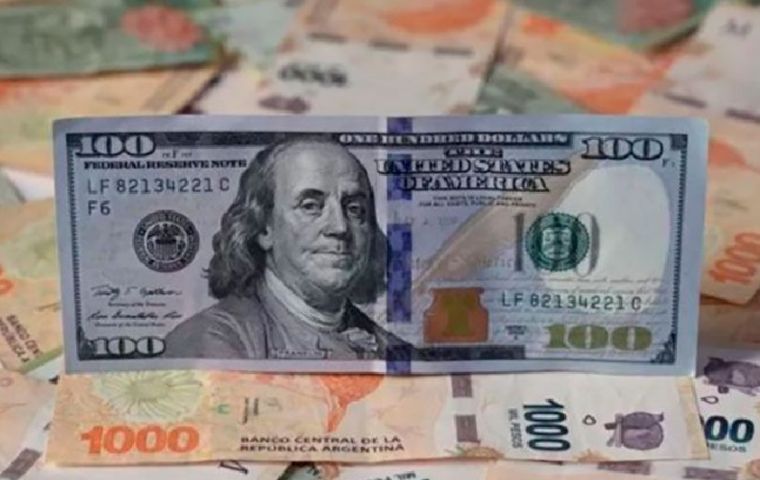MercoPress. South Atlantic News Agency
Paraguay and Uruguay prepare for new scenario with stronger Argentine peso
 The new floating quotation between the Argentine peso and the US dollar is foreseen to have positive repercussions in both neighboring countries
The new floating quotation between the Argentine peso and the US dollar is foreseen to have positive repercussions in both neighboring countries Following Buenos Aires' announcements regarding the lifting of restrictions to exchange local pesos into US dollars, neighboring Uruguay and Paraguay are preparing for the changes to come. Both countries foresee an increasing influx of Argentine travelers to benefit from the new scenario, which in the case of Paraguay also includes a depreciating guaraní.
In Asunción, Paraguay's Association of Exchange Parlors President Emil Mendoza expects more Argentines to cross the border to make purchases at more affordable prices, while Uruguayan Economist Nazareno Sánchez of CPA Ferrere foresees an increasing number of leisure travelers.
In addition, Mendoza noted that while Argentina’s economy may see a cheaper dollar, Paraguay’s guarani is expected to stand at ₲ 8,200 per dollar by year-end from Tuesday's ₲ 7.983,94. Factors like a 17% drop in agricultural exports (e.g., soybeans) and traders using dollar savings add pressure on the guarani. No short-term dollar devaluation is expected, barring artificial interventions by the Central Bank of Paraguay (BCP).
“We will have a more valuable peso against the dollar, which will give Argentines greater purchasing power,” Mendoza said. “We saw that [Argentine President Javier] Milei obtained credits abroad; this will bring more dollars into his economy and will make this currency lower its price. Whenever the purchasing power improves, there would be a possibility that people would come to our market to buy,” he pointed out.
“As of March, we had a 17% reduction in exported agricultural products, and many traders are turning to use savings in dollars, which puts additional pressure on this currency,” he further noted.
Argentina's devaluing the official exchange rate brought it closer to the “blue” (a euphemism for “black market”), thus easing exchange pressures. While this may cause a short-term price spike, it is not expected to disrupt inflation trends if market expectations are managed and external factors remain stable.
While Uruguayans had grown accustomed to shopping across the border to capitalize on Argentina’s wide exchange rate gap, the new context almost rules out that possibility. However, it could boost Uruguay’s economy through increased demand for goods and services, particularly tourism, given the countries’ proximity, although it is too early to take it for granted.
“The recent relaxation of the stocks and the exchange rate regime represent a significant step within the stabilization plan that the Argentine economy is going through,” Sánchez told Montevideo Portal. “The implementation of a new system of floating bands, although it continues to be a variant of the managed exchange rate, takes pressure off the BCRA [Central Bank of Argentina], since it stops defending a specific value of the exchange rate and allows the quotation to move within certain established margins,” he added.
“One of the main factors that explained why Argentina was relatively cheaper was the wide gap between the official dollar and the parallel dollar,” he also mentioned. “Many prices in Argentina were fixed based on the official exchange rate, while tourists could access foreign currency through the parallel market at a much more convenient value.” As this gap was reduced “due to the effect of the devaluation,” Uruguayans will no longer benefit from it, he explained. “However, given the proximity between both countries, any progress towards Argentina's economic stabilization and recovery could derive in positive effects for Uruguay, either through an increase in the demand for goods or services, such as tourism.”




Top Comments
Disclaimer & comment rulesCommenting for this story is now closed.
If you have a Facebook account, become a fan and comment on our Facebook Page!